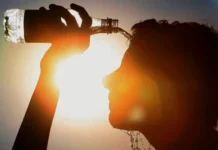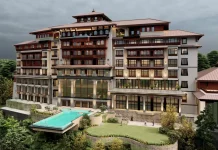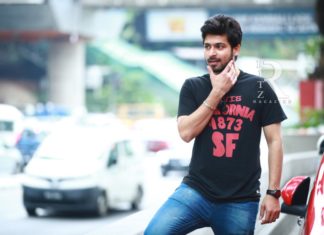A journey through Kruger National Park
If you remember your lessons in geography, you’ll remember that the word veldt means field or bush in Dutch or Afrikaans and is used to describe the grasslands which are found predominantly in sub-Equatorial Africa. Africa evokes so many memories and images, the writings of Gerald Durrell, Phantom comics, The Gods Must Be Crazy movies, National Geographic’s many documentaries on the region’s wildlife and tribal population, Born Free and the tale of Elsa the lioness… well, the list goes on. It was with all of these images in mind, that we embarked upon our 2-week journey across South Africa.
We flew into Johannesburg from Bengaluru via Mumbai and Nairobi, on what was a long but uneventful flight (the return journey was to be otherwise, but we were none the wiser at that point.) After a reunion which was 15 years in the making, with friends (more like family) who we were staying with, we embarked on the day after our arrival upon our journey to the proverbial Mecca for the wildlife enthusiast in South Africa – Kruger National Park.
[wzslider autoplay=”true” transition=”‘flash'” lightbox=”true”]
We had engaged Baz Bus, a budget bus service which caters mainly to backpackers, to take us on a 3-day safari trip to Kruger, which would include stay and the to and fro journey from Johannesburg. Kruger National Park is one of the largest game reserves in Africa. It covers an area of 19,485 square kilometres (7,523 sq mi) in northeastern South Africa and extends 360 kilometres (220 mi) from north to south and 65 kilometres (40 mi) from east to west. Kruger became South Africa’s first national park in 1926 and today, is part of the Great Limpopo Transfrontier Park, a peace park that links Kruger National Park with the Gonarezhou National Park in Zimbabwe and with the Limpopo National Park in Mozambique. The park is part of the Kruger to Canyons Biosphere, which is designated by UNESCO as an International Man and Biosphere Reserve. Kruger is famous for many different forms of flora and fauna, but chief among these are the Big Five of the animal kingdom, named thus not because of size, but due to the danger involved in hunting them- the African lion, the African elephant, the Cape buffalo, the African leopard, and the White/Black rhinoceros.
Kruger is an 8-hour journey (with stops and pickups) from Johannesburg, which our driver Moses covered in record time. It was quite a while before the folks on the bus could forget that drive. There were eight of us on the journey and over the next 3 days, we were to get to know each other really well. Our stay was at the Klasserie River Camp, which has tents as well as bedded accommodation.
Moholoholo Wildlife Rehabilitation Centre
After unloading our luggage, we set off to visit the Moholoholo Wildlife Rehabilitation Centre at Hoedspruit, not far from the boundaries of Kruger National Park.
Moholoholo is dedicated to rescuing injured and poisoned animals and ultimately rehabilitating them into the wild. Unfortunately, this is not always possible, as the guide explained to us. As a consequence, the Rehab Centre has quite a few animals and birds who are referred to as their ‘permanent residents’. These animals and birds act as ambassadors for Moholoholo’s cause and for their species.
At Moholoholo, we were able to pet cheetahs, feed vultures and see lions, leopards and other animals up close. All these animals and birds were in a near-natural environment, so that the visitor walked away with an authentic understanding of what the animals’ existence must be like, in the wild. The Rehab Centre also does a lot of work to monitor animal movement and protect animals from the onward march of humanity, which often results in endangered species getting hurt or poisoned because they encroached upon human settlements. The Rehab Centre has been featured in many documentaries and features, the most famous being ‘Wild Orphans’, which has even featured on the National Geographic Channel.
We returned from Moholoholo with our first impressions of wild Africa. Around a bonfire, after dinner, we met Goodman Ubisi, who was to be our guide for the next couple of days, as we finally ventured into Kruger National Park. As Goodman explained the rules of engagement and do’s and don’ts while on safari, we began to get excited, looking forward to an early rise and our first African safari.
Kruger National Park
We set off just before dawn, in a canvas-topped safari van, at a steady speed of 60kmph. Entering Kruger National Park through the Orpen Gate, we were greeted with a sighting of a pack of African Wild Dogs (also known as the African Hunting Dog or African Painted Dog), sitting on the road, for no apparent reason. As we learnt from a very excited Goodman, these dogs are extremely endangered and a rare find indeed. Considering this a good omen, we set off further into Kruger. Over the next few hours we saw vultures, giraffe, elephants, zebra, impala, nyala and kudu. The kudu has been adopted as the emblem and mascot of the South African National Parks.
We then stopped for lunch in the midst of Kruger’s immense natural beauty, at a clearing meant for picnics. The planning and foresight of the National Park administration was with us everywhere, as there was clear signage for tourists as well as facilities for supplies, and for picnics. All of these were set up through the contributions of wild life enthusiast, and it was not uncommon to see a commemorative plaque here and there, signifying the love for a dear one or a well-regarded public figure.
After lunch, we resumed our safari. Goodman had already impressed us with his prolific knowledge of the flora and fauna of Kruger. We learnt that he was a native of the region and was raised not far from Kruger. With his knowledge, came an almost bionic vision, which meant that he was often able to spot heavily camouflaged animals and high-flying birds, before any of us (all the while moving at 60kmph!) Even so, we were all startled out of our post-lunch reveries by Goodman’s sudden victory-cry of ‘Lions!’ There were 2 of them, males, about 500m away from us, in dense grass and shade, which acted as the perfect camouflage. Goodman had spotted them, while driving, with his naked eyes.
After enthusiastic photography of the lions, followed by more giraffe, elephants and zebra, we returned to camp. A short break and we were again off, this time to a private game reserve, which was adjacent to our camp grounds. Here we saw the white rhino, the cape buffalo and the ostrich. We stopped in the middle of the reserve to enjoy the sunset, with wine and crackers. On the way back, Goodman once more impressed us with his sight, by picking out a 4-inch chameleon on a green shrub (yes, the chameleon was green too), while driving in the darkness. Needless to say, by this time, all of us were absolute fans of this smiling African bushman.
Our second day into Kruger was longer but equally filled with excitement. It began with us sighting a leopard with its kill (a young zebra, which it had killed and hauled up into a short tree, just by the road), followed by hyena, more zebra, elephants, giraffe, quite a few rare birds and finally, two lions and a lioness shortly before lunch. By this time, we had covered the Big Five well. In fact, we had even seen one of the small five, named after the big five, but smaller in stature. The small five consists of the Elephant Shrew, the Buffalo weaver, the Leopard tortoise, the Ant lion and the Rhino beetle. Of these we saw the Leopard tortoise twice, ambling along the road at its own leisurely pace. On the way back to camp, in the after-dusk darkness, Goodman gave us a final exhibition of his night-vision by sighting a highly poisonous tree snake, called the boomslang, nestled in one of the bushes near the campsite entrance. Suffice to say that we were steering clear of the trees and over-using our torches after that!
Back to Jo’burg
The next morning, we left early for our journey back to Johannesburg. Along the way, Moses, now driving at a more sedate pace after our multiple reminders, took us through a picturesque route via the famous Blyde River Canyon, which is one of the largest canyons on Earth, and arguably the largest ‘green canyon’ due to its lush foliage. It is the second largest canyon in Africa, after the Fish River Canyon, and is known as one of the great wonders of nature on the continent. By this time, our group had started calling ourselves Goodman’s Eight and had even exchanged numbers. A Whatsapp group was a mere formality after that. Lots of selfies were clicked as we made our way back to Johannesburg, reminiscing on our very first African safari. As my wife and I got back into Johannesburg’s traffic snarls, we felt invigorated by our trip to Kruger and the veldt and were very much looking forward to the next leg of our journey, the Garden Route.








 Raashii Khanna
Raashii Khanna










